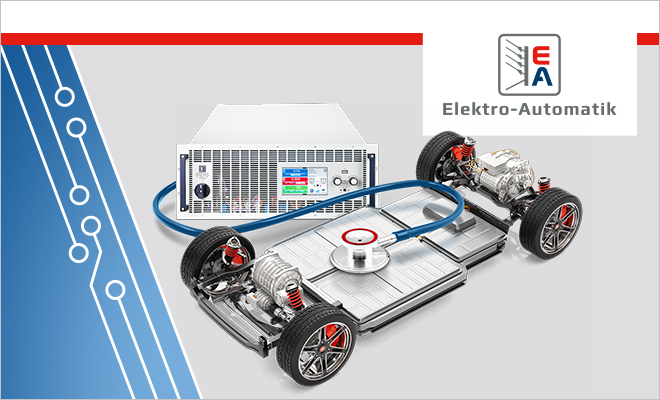
Sponsored by Elektro-Automatik.
The energy transition represents a global tour de force that will not succeed without massive electrification. To achieve this, various levers must be set in motion. The production capacities of battery manufacturers must increase dramatically, and at the same time battery systems must have better energy utilization thanks to optimized efficiency. This means they must be faster, store more power over a longer period and release it with low losses. Flexible, reliable and high-performance mass testing is essential for both the ramp-up of factory capacities and the further development of batteries. In our white paper, we explain how you can benefit from the features of a bidirectional power supply for such tests. But first, let’s take a closer look at the features of the EA-PSB 10000, a leading model among bidirectional power supplies.
Highest power density
To be able to quickly test battery systems during tests, the equipment used for this purpose must have an appropriate power level. The EA-PSB 10000 offers 30 kW of bidirectional power – in just four 4 height units. This allows the devices to be used in a space-saving manner, for example in test or engineering laboratories. Overall, the EA-PSB 10000 thus offers one of the highest power densities on the market.
Power regeneration
A core function of bidirectional power supplies is their ability to absorb energy as a load. The EA-PSB 10000 offers a very effective power regeneration of up to 96 percent efficiency. The absorbed energy is fed back into the local mains and can be used for other purposes, saving power consumption and costs. In addition, the heat generation typical of electronic loads is eliminated, so users do not need extra cooling for the EA-PSB 10000. This also saves further costs.

Autoranging and function generator
To meet the high demands on the battery systems of the future, flexible and innovative battery tests must already be used today. The EA-PSB 10000 has the right features for this with true autoranging and a function generator. The underlying operating principle of autoranging is simple. The source automatically provides increased current at lower voltages, maximizing flexibility in testing. This allows users to test multiple voltage and current combinations with a single source. With the function generator’s arbitrary function, it is possible to generate complex signals as a function of a DC bias voltage, as well as simulate characteristics such as those of solar cells, batteries and fuel cells.

Conclusion
Modern bidirectional power supplies such as the EA-PSB 10000 offer both the necessary power and precisely fitting functions to further develop batteries and support the expansion of global production capacities. The prerequisite, however, is that users know how to make practical use of the aforementioned benefits in battery testing. For further reading, we recommend our associated white paper.
To learn more visit the Elektro-Automatik website.






